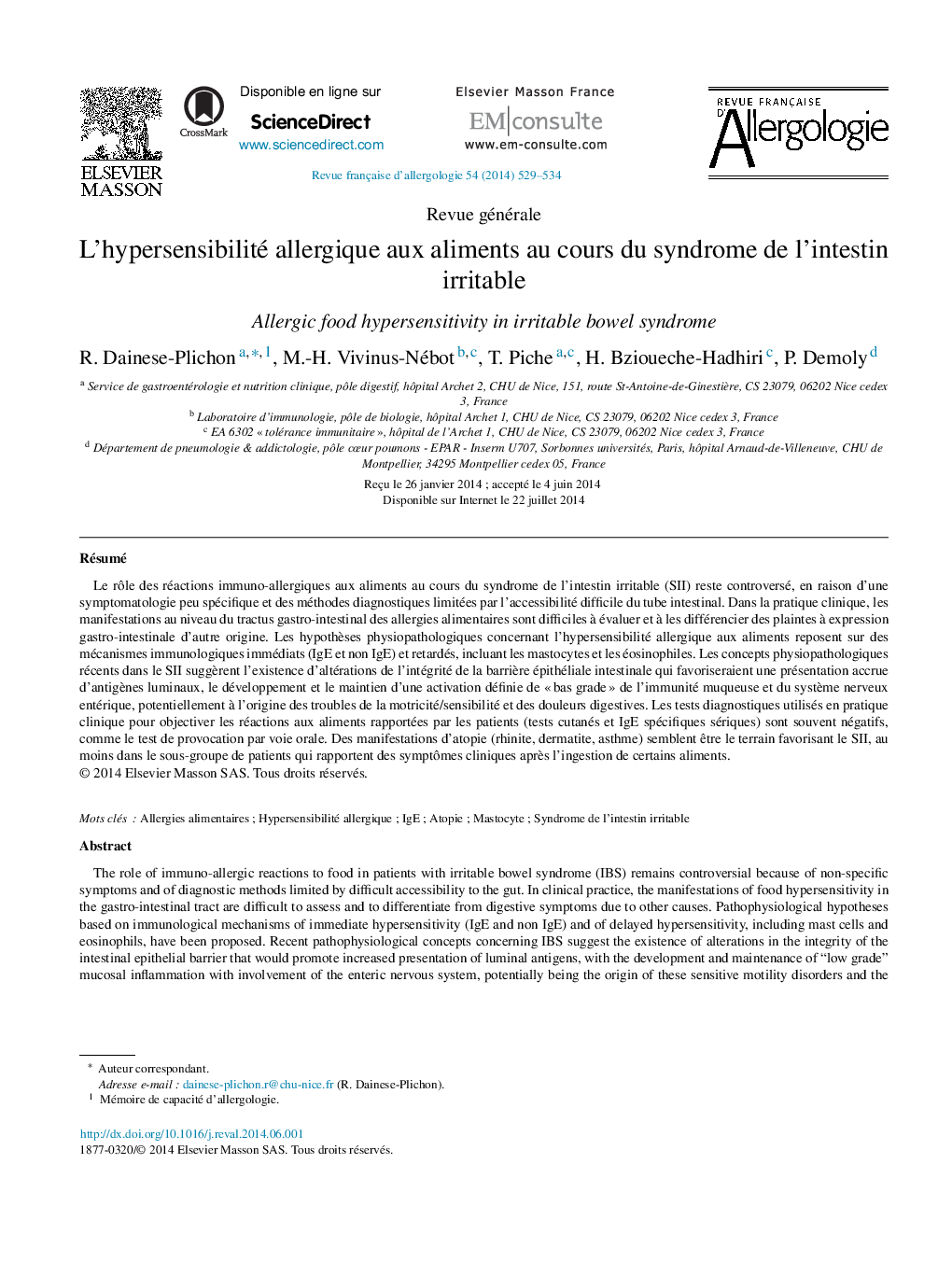| کد مقاله | کد نشریه | سال انتشار | مقاله انگلیسی | نسخه تمام متن |
|---|---|---|---|---|
| 3385858 | 1220627 | 2014 | 6 صفحه PDF | دانلود رایگان |

RésuméLe rôle des réactions immuno-allergiques aux aliments au cours du syndrome de l’intestin irritable (SII) reste controversé, en raison d’une symptomatologie peu spécifique et des méthodes diagnostiques limitées par l’accessibilité difficile du tube intestinal. Dans la pratique clinique, les manifestations au niveau du tractus gastro-intestinal des allergies alimentaires sont difficiles à évaluer et à les différencier des plaintes à expression gastro-intestinale d’autre origine. Les hypothèses physiopathologiques concernant l’hypersensibilité allergique aux aliments reposent sur des mécanismes immunologiques immédiats (IgE et non IgE) et retardés, incluant les mastocytes et les éosinophiles. Les concepts physiopathologiques récents dans le SII suggèrent l’existence d’altérations de l’intégrité de la barrière épithéliale intestinale qui favoriseraient une présentation accrue d’antigènes luminaux, le développement et le maintien d’une activation définie de « bas grade » de l’immunité muqueuse et du système nerveux entérique, potentiellement à l’origine des troubles de la motricité/sensibilité et des douleurs digestives. Les tests diagnostiques utilisés en pratique clinique pour objectiver les réactions aux aliments rapportées par les patients (tests cutanés et IgE spécifiques sériques) sont souvent négatifs, comme le test de provocation par voie orale. Des manifestations d’atopie (rhinite, dermatite, asthme) semblent être le terrain favorisant le SII, au moins dans le sous-groupe de patients qui rapportent des symptômes cliniques après l’ingestion de certains aliments.
The role of immuno-allergic reactions to food in patients with irritable bowel syndrome (IBS) remains controversial because of non-specific symptoms and of diagnostic methods limited by difficult accessibility to the gut. In clinical practice, the manifestations of food hypersensitivity in the gastro-intestinal tract are difficult to assess and to differentiate from digestive symptoms due to other causes. Pathophysiological hypotheses based on immunological mechanisms of immediate hypersensitivity (IgE and non IgE) and of delayed hypersensitivity, including mast cells and eosinophils, have been proposed. Recent pathophysiological concepts concerning IBS suggest the existence of alterations in the integrity of the intestinal epithelial barrier that would promote increased presentation of luminal antigens, with the development and maintenance of “low grade” mucosal inflammation with involvement of the enteric nervous system, potentially being the origin of these sensitive motility disorders and the abdominal pain. The diagnostic tests used in clinical practice (skin tests and specific IgE serum) to identify the source of self-perceived reactions to food reported by patients are often negative, as are oral provocation tests. Classic manifestations of atopy (rhinitis, dermatitis, asthma) seem to be the background favoring IBS, at least in the subgroup of patients reporting clinical symptoms after ingestion of certain foods.
Journal: Revue Française d'Allergologie - Volume 54, Issue 7, November 2014, Pages 529–534